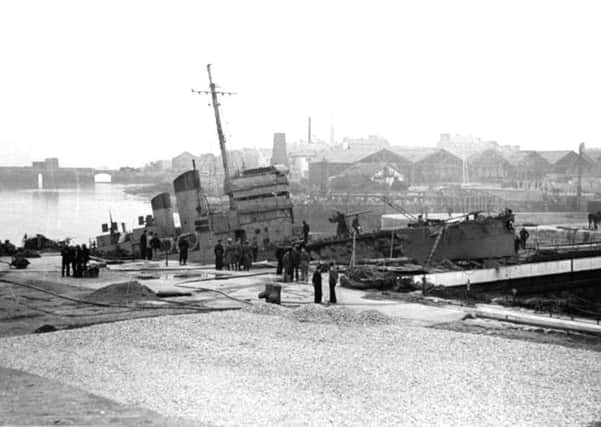Operation Chariot - The Greatest Raid Of All


Germany had been unable to conquer Britain, the United States and Soviet Russia were now at war with the Nazis, but Britain’s position remained vulnerable.
Much of our food and war material came across the Atlantic in huge convoys.
Advertisement
Hide AdAdvertisement
Hide AdU-boats were a constant menace to shipping but lurking in Norway lay the mighty Tirpitz, sister ship of Bismark, a terrifying monster of a battleship capable of destroying any ship deployed against her.
Despite this though she had an Achilles Heel. If she was damaged and required repair below her waterline there was only one dry dock in Europe available to the Germans that could accommodate her bulk. This was the vast Normandie dry dock at St Nazaire, built to take the majestic ocean liner of the same name.
An audacious plan was hatched to take the Normandie dock out of the war, it was bold and it was highly dangerous, in fact some would say it was a ‘one way mission’.
HMS Campbeltown, an old US Navy destroyer was converted to resemble a German destroyer. She was then stripped down and packed with four tons of high explosives. She was to sail up the Loire River under the very noses of the defenders and ram the lock gates at full speed.
Advertisement
Hide AdAdvertisement
Hide AdEven in daylight and peacetime this would be a tricky piece of sailing. The dock lay six miles up the River Loire, away from the navigation channel.
The passage chosen was narrow and shallow, only 10 feet deep, and now in wartime the coast and dock area bristled with weaponry, everything from machine guns up to large coastal guns. To add to this, there was a Garrison of 5,000 troops in the town for its defence.
As well as the ship’s crew, on board Campbeltown was a detachment of 300 Commandos. Their job was to storm off the ship and sabotage vital parts of the dock machinery. They were fearsome men, an elite force.
Accompanying Campbeltown were a flotilla of motor launches, small, very fast but lightly armed and thinly armoured. They were to harass the defenders with their weapons and extract the men after the raid was complete.
Advertisement
Hide AdAdvertisement
Hide AdOn March 26, 1942 the raid went ahead. The ships left Falmouth and sailed across the English Channel amidst great secrecy. They headed West to give the impression they were going to join a convoy but later turned south and made for the French coast.
On board the men went about their work with a mixture of fear and anticipation of the task ahead of then. One of these men was Able Seaman Thomas Findlay (24) from Bonnyrigg, a miner and a football player of some note before the war.
His role was crucial. When the ship went into action he would be one of them crewing an Oerlikon anti-aircraft gun. Its firepower would give covering fire for the attacking Commandos.
En-route the convoy had two major scares. They were spotted by a U-boat which was forced to dive and latterly by two French trawlers. Their crews were taken on board and the boats were scuttled. At 11pm on the 26th the point of no return was reached. Word was quietly passed around. The raid was on.
Advertisement
Hide AdAdvertisement
Hide AdAs they headed up the channel the Germans saw them but thought that they were German at first due to the camouflaged superstructure.
Urgent signals were flashed by the defenders, but in response Campbeltown flashed back coded answers. The Allies had broken the German code.
This worked for quick a while until about one mile out the Germans realised what was happening and let fly with everything they had. Man after man was killed on the open bridge, but the ship stayed on course. Bullets and shells of every calibre bounced off the special armour plating.
Seeing the dock gates looming, the captain ordered full speed and for the men to brace themselves. Doing 22 knots she ploughed into the gate with a colossal impact. The captain looked at his watch and said, “Not bad, eight minutes late”. The ships gunners heroically fired their weapons until no were left standing, including Thomas Findlay.
Advertisement
Hide AdAdvertisement
Hide AdSome hours later the delayed action fuses still had not detonated the explosives. The Germans were congratulating themselves on repelling the raid - 168 of the raiders were dead and nearly 300 were captured.
Hundreds of Germans were now on Campbeltown. Just after 10am the explosives went off blowing everyone nearby to smithereens.
The dock gate was so badly damaged it was not repaired until 1947. Only five Commandos left behind escaped after weeks on the run.
Following the raid Hitler decreed that no Commandos would be taken prisoner. They were to be shot on the spot. Operation Chariot was so successful and so heroic that it resulted in the award of five Victoria Crosses and 80 other decorations for gallantry.